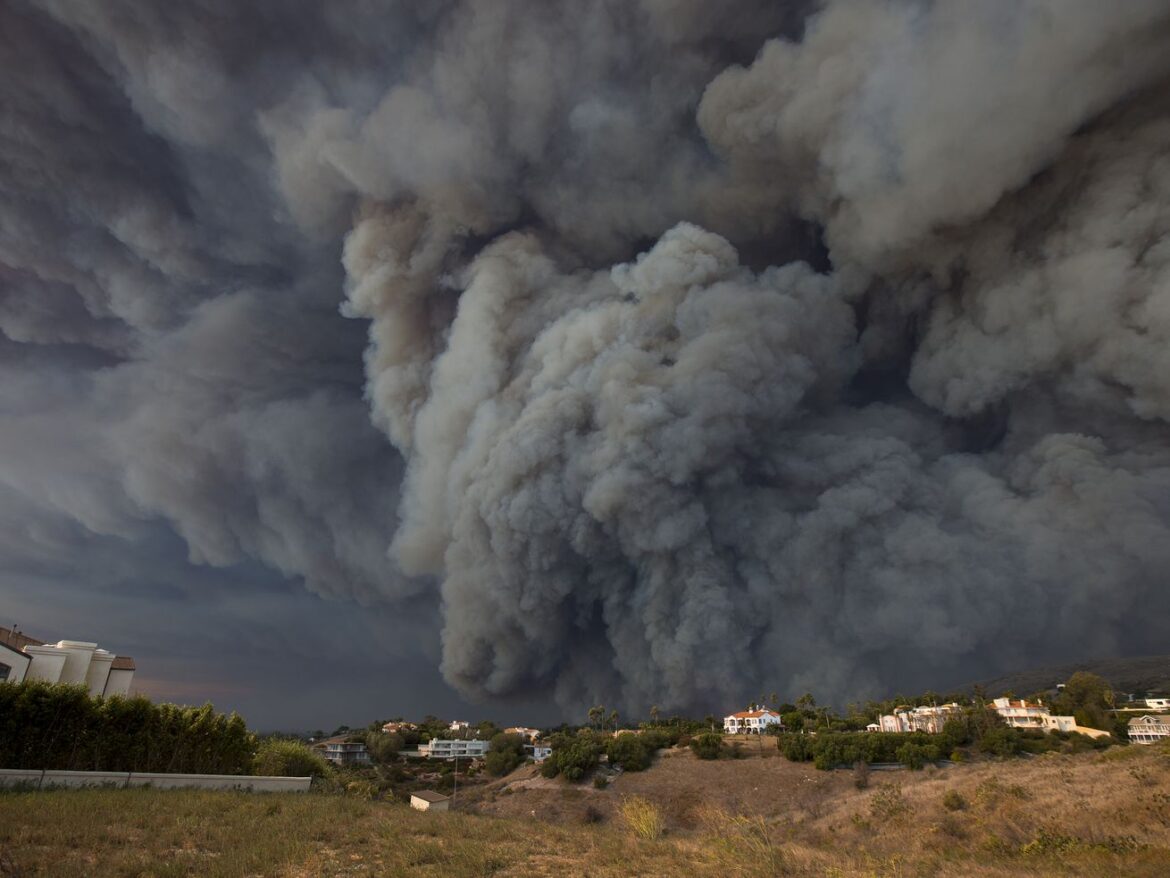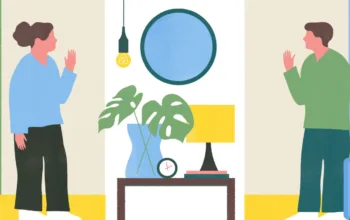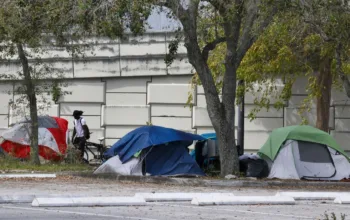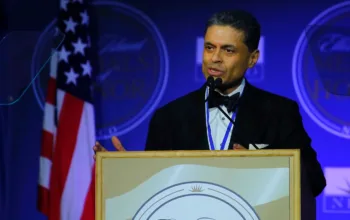Climate change is holding back progress on reducing air pollution.
For more than two decades, the American Lung Association (ALA) has posed a simple question: Is air pollution in the United States getting better or worse?
The answer is no longer a simple one.
For the first 40-something years of the Clean Air Act of 1963, the Environmental Protection Agency could show progress toward cleaner air — even if it was sometimes slow or uneven. The agency issued regulations for sources of the pollutants it was set up to tackle, like diesel car tailpipes and coal power plants, and over time, the air quality improved.
But the trend changed abruptly about five years ago, when pollution from wildfires, heat, and drought — trends worsened by climate change — began to overtake these gains.
“If you look at the trend of air pollutants, the highest historical levels of air pollution occurred in the late 1990s and early 2000s,” said Katherine Pruitt, ALA’s national senior director for policy. “Then as the Clean Air Act started to work, most places in the country started getting cleaner. We still have all of the same air pollution controls in effect, but the progress is being undercut and undone by climate change,”
The latest State of the Air, which captures data over three years from 2019 to 2021 in counties that monitor air quality (only about one-third of all counties nationwide) delivers mixed news. This report shows 19 million fewer Americans lived in counties with unhealthy levels of ozone than in last year’s report. Pruitt called this a “fantastic decrease.”
But it’s undercut by fine particulate matter — microscopic inhalable solids and liquid droplets — going upward. The report found an additional half-million people lived in counties exposed to unhealthy short-term spikes in particulate matter compared to the last State of the Air report.
Climate change is complicating what’s happening to the nation’s air quality, as worse drought, heat waves, and wildfires make it harder to say air pollution will follow a predictable path year after year.
The dueling signals from ozone and particulate matter
Cleaner air in the US does not mean clean air. Air pollution is still a danger to roughly one in every three Americans. People of color are 64 percent more likely to live in a county with a failing grade for either ozone or particulate matter. That number is actually rising compared to the last State of the Air report.
The report focuses on two pollutants of the most concern for public health: ozone and particulate matter. In the stratosphere, ozone helps block ultraviolet radiation from the sun, but at the ground level it causes smoggy air, posing a threat to lungs, hearts, and brains. The other pollutant, fine particulate matter, is roughly 30 times smaller than the width of a human hair, capable of going deep into the lungs and bloodstream because of its minuscule size.
Ozone and fine particulate matter affect the entire body in all stages of life. They impact the young and old, pregnant people and the developing fetus, and can cause and worsen respiratory disease, cardiovascular disease, and worse cognition. Their sources can be a bit different, though. Burning oil, gas, and coal, whether at the tailpipe or power plant, releases pollutants that cause both ozone and particulate matter. Ozone also is more likely to form in hot weather, while wildfires tend to be much worse for particulate matter.
Wildfires help explain most of the fluctuations we’re now seeing in particulate matter data. The Lung Association found that the number of people living in places with failing grades in particulate matter has almost doubled in the past five years. And most of them are living in the West.
The report found that all but two of the worst 25 counties for short-term particulate matter are in western states.
/cdn.vox-cdn.com/uploads/chorus_asset/file/24594578/2023_Daily_PM_Top_25_DIG_01__1_.png)
State of the Air 2023
/cdn.vox-cdn.com/uploads/chorus_asset/file/24594582/2023_Ozone_Top_25_DIG_01.png)
State of the Air 2023
On the other end of the spectrum, the cleanest-air states were concentrated in the east, where a record eight states didn’t receive a failing grade for ozone for the first time in the report’s history.
One of the major limitations of the report is that it doesn’t have data for every county in the US. It’s a snapshot of the data we do have, but less than a third of US counties, or 922 counties, continuously monitored air pollution over the three-year period.
Climate change makes it harder, but not impossible, to improve air quality
Regulations will still work to improve air pollution, but the US will have to make them work even harder to reach the same level of difference.
The solutions are also similar: The fewer coal-fired power plants, fewer smokestacks, and cleaner vehicles we have, the less air pollution we’ll be contending with, even with climate change pushing in the opposite direction. The EPA can keep tightening its rules for national ambient air quality standards for both ozone and particulate matter to help what can be controlled. What’s more, Congress mandated these be reviewed every five years by the EPA, and new, stronger restrictions are long overdue from the Biden administration.
New power plant rules targeting mercury and climate pollution can also make a difference in how much coal we burn. Transportation is another major polluter, and newer standards from the EPA and California that promote more electric vehicles and hybrids lessen the diesel and gas that’s burned.
These policies have the added benefit of tackling greenhouse gasses that are making wildfires more widespread. “There are definitely promising signs that the work we’re doing to clean up the air is making a difference,” Pruitt said. “The faster that we put the brakes on making climate change worse, the more breathing room we have to patch up the damage that’s been done.”



